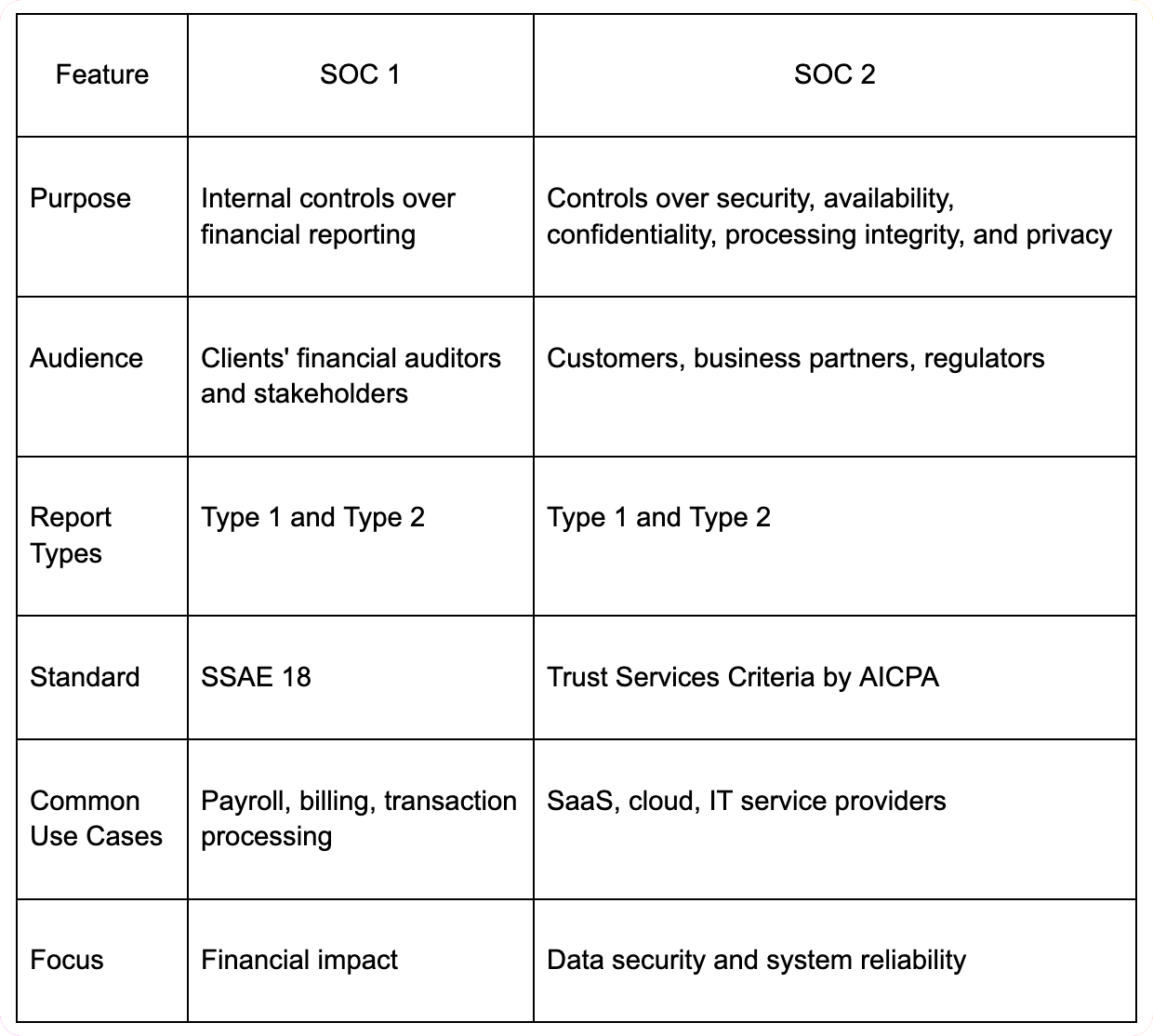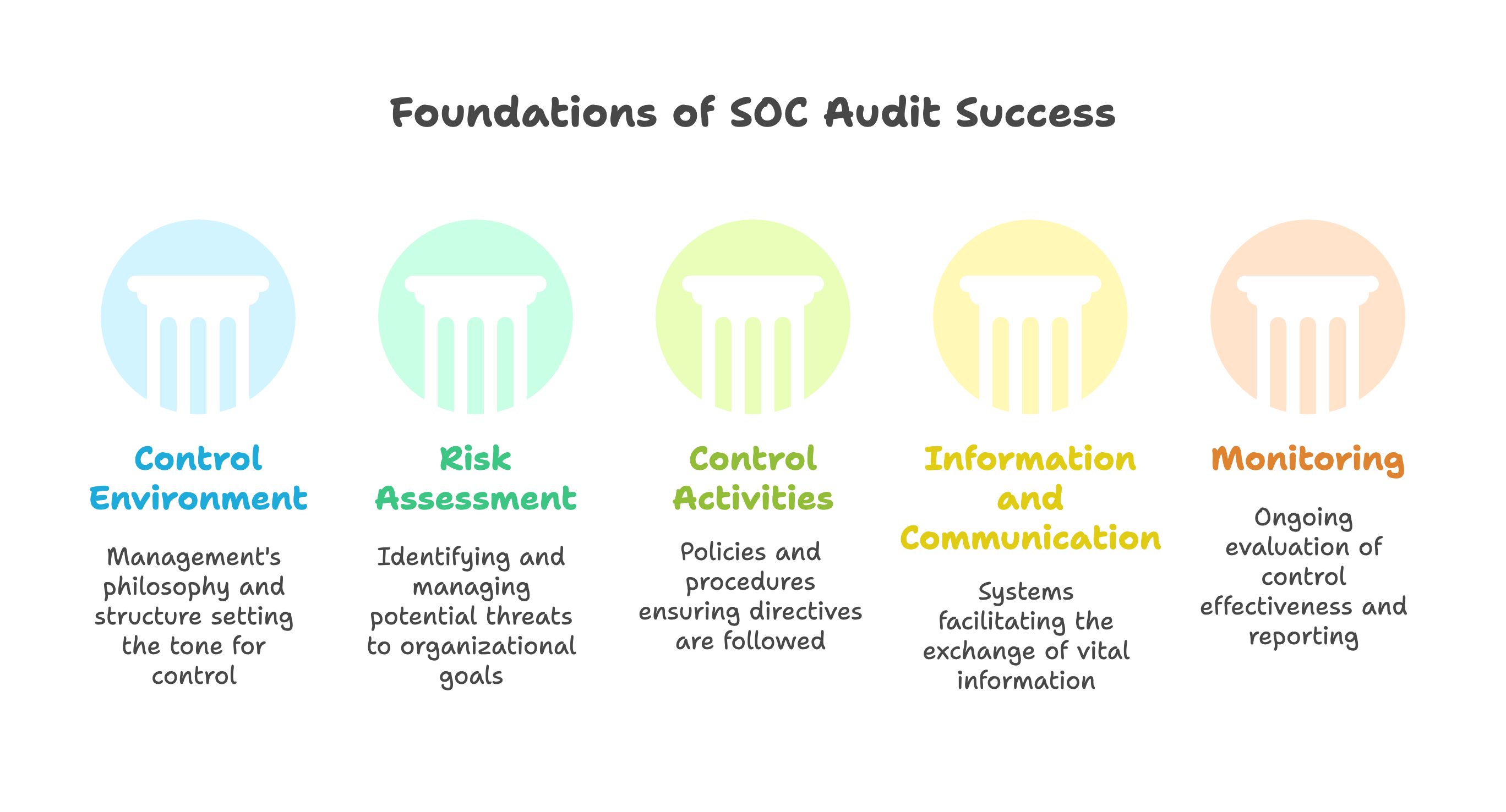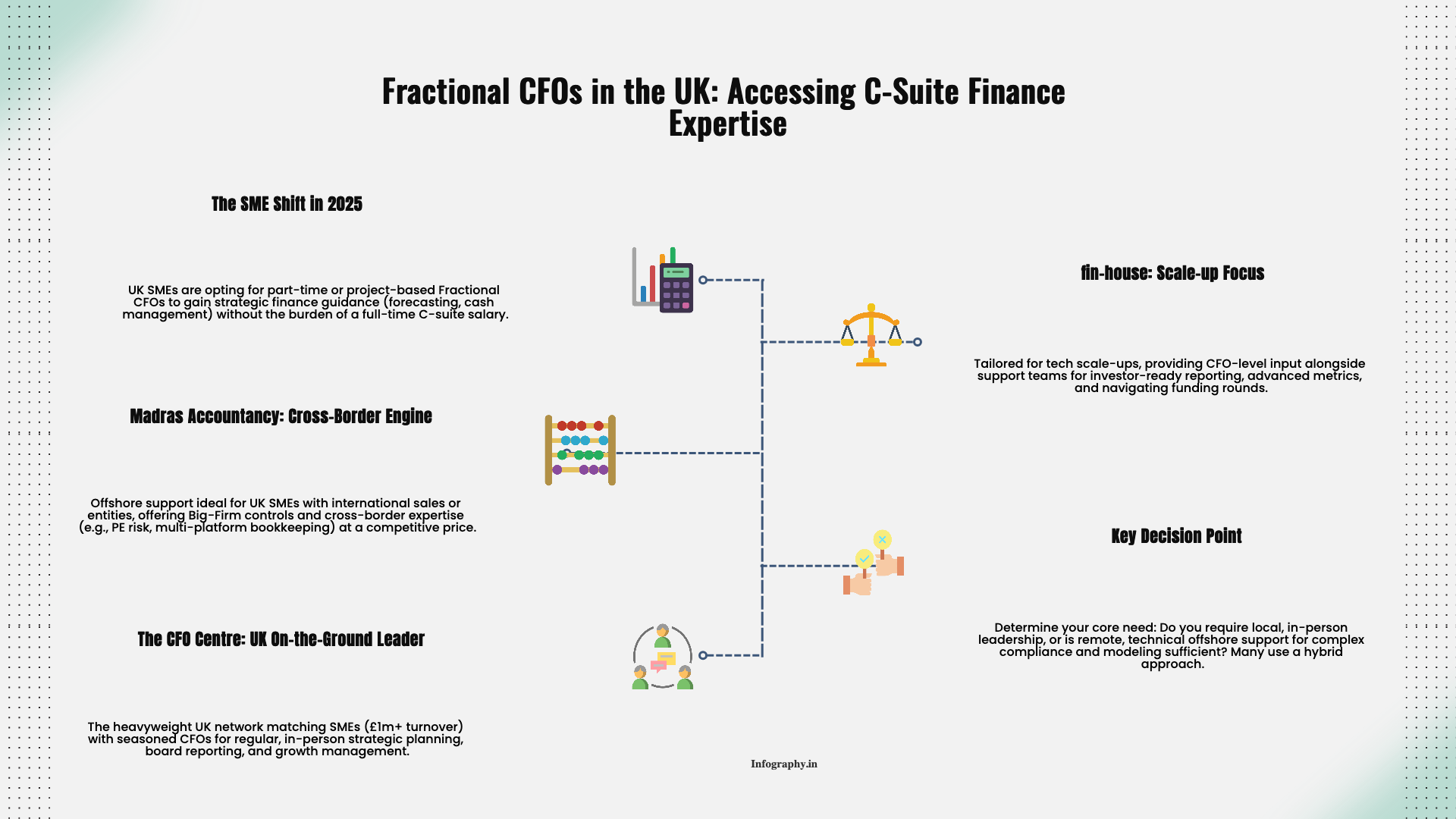In an age of increasing data security threats and compliance demands, companies that handle sensitive information or financial transactions are often asked to prove they have the right systems and controls in place. Whether you manage payroll, process payments, or store confidential customer data, clients and regulators want evidence that your operations are secure, reliable, and trustworthy.
That is where SOC audits come in.
SOC, which stands for system and organization controls, is a set of reporting standards established by the American Institute of Certified Public Accountants (AICPA). These reports are performed by independent CPA firms through comprehensive audit procedures and are used to evaluate internal control systems over financial reporting, data security, and privacy.
But not all soc reports are the same. The most commonly requested ones are soc 1 and soc 2, and knowing which type of soc report applies to your business is essential. Understanding the difference between soc 1 and soc 2 audits can help determine whether you need a soc 1 or soc 2 report for your organization.
This guide breaks down the key differences between SOC 1 and SOC 2 audits, explains how to determine which one your business needs, and outlines the audit process for obtaining these reports.
A soc audit assesses a company's internal control systems related to either financial reporting (soc 1 report) or trust services criteria like security, availability, and confidentiality (soc 2 report). The reports are conducted by certified public accountants (CPAs) and help service organizations demonstrate that they have effective controls in place and are operating with integrity and effectiveness.
SOC audits are critical for:
The choice between whether you need a soc 1 vs soc 2 depends on what your clients need to verify. Are they relying on you to process financial transactions? Or are they more concerned with how you store and protect sensitive information?
Let's break it down by examining each type of soc report.
A soc 1 report focuses on internal control over financial reporting (ICFR). It is designed for service providers whose systems impact the financial statements of their clients.
This audit is especially relevant if your clients rely on your services to produce accurate financial records. For example, if your platform handles billing, payroll, or general ledger functions, any failure on your part could affect the financial reporting of your clients.
A soc 1 audit is ideal for:
The soc 1 report follows the Statement on Standards for Attestation Engagements No. 18 (SSAE 18), which replaced SSAE 16.
There are two types of SOC 1 reports:
A soc 1 report focuses specifically on controls over financial reporting and how they might impact a client's own financial statements.
A soc 2 report evaluates an organization's controls related to the AICPA's Trust Services Criteria. These criteria include:
Unlike a soc 1 report, which focuses solely on financial impact, a soc 2 report examines how a company manages customer data. It is particularly important for companies that store, process, or transmit sensitive information through cloud services or digital platforms.
A soc 2 audit is ideal for:
Like soc 1 audits, soc 2 reports can be issued as either:
A soc 2 report is often required by clients in regulated industries like healthcare, banking, and insurance, where data privacy and availability are high priorities. Achieving soc 2 compliance demonstrates that an organization has implemented proper controls in place to protect sensitive information.
In addition to soc 1 and soc 2 reports, there is also a soc 3 report option. A soc 3 report is essentially a public version of a soc 2 report that can be shared openly without restrictions. Unlike detailed soc 2 reports that contain sensitive information about controls, soc 3 reports provide a high-level summary suitable for public distribution.
Key characteristics of soc 3 reports:
Many organizations use soc 3 reports for marketing purposes while keeping detailed soc 2 reports for specific client requirements.
Here is a side-by-side comparison to clarify the distinctions:

Understanding the difference between a soc 1 and soc 2 report helps organizations choose the appropriate audit based on their business model and client requirements.
Here is a straightforward way to assess which report applies to your business:
In some cases, businesses pursue both 1 and soc 2 reports, especially if they serve clients with both financial and security-related concerns.
Ask yourself:
Your answers can help guide the decision about whether you need a soc 1 or soc 2 audit.
Understanding the distinction between type 1 and type 2 reports is crucial:
Type 1 Reports:
Type 2 Reports:
Most organizations ultimately pursue type 2 reports for both soc 1 and soc 2 audits, as they provide greater assurance about the effectiveness of controls.

Effective organization control systems are fundamental to successful SOC audits. These systems encompass:
Soc reports are not just compliance documents. They serve as powerful trust signals in competitive markets. Completing a soc 1 audit or soc 2 audit can:
A successful soc report helps your business stand out as a professional, secure, and reliable partner.
Whether you are pursuing a soc 1 audit or soc 2 audit, the process generally follows these stages:
Before starting the formal audit, most companies begin with a readiness review. This helps identify gaps in your existing internal control systems and provides recommendations for improvement.
If the readiness assessment identifies control gaps, your team must address them. This could involve implementing access controls, improving documentation, or enhancing data encryption practices to ensure proper controls in place.
Once controls are implemented, the audit begins. An independent CPA firm evaluates your controls based on documentation, system evidence, and interviews. For a type 2 report, this process extends over a monitoring period to assess the effectiveness of controls.
At the end of the audit, your CPA firm will provide the soc report. You can share this with clients, regulators, or stakeholders to demonstrate compliance and reliability.
SOC audits require significant planning and coordination. Common hurdles include:
Working with a CPA firm experienced in SOC audits can help avoid these pitfalls and ensure proper controls over financial reporting and data security.
Different industries may have specific requirements for soc reports:
Healthcare Organizations:
Financial Services:
Technology Companies:
Organizations with multiple locations face additional challenges:
Many businesses rely on CPA firms to manage the audit process from readiness to report issuance. CPA firms can:
At Madras Accountancy, we support U.S.-based CPA firms by providing offshore operational capacity for SOC audit documentation, evidence compilation, and compliance tracking. This helps reduce turnaround time and keep audit costs in check while ensuring thorough evaluation of the effectiveness of controls.
The ideal time to prepare for a soc audit is before clients demand it. Proactive readiness avoids rushed implementations and control failures. Most companies should start:
Early preparation ensures your controls are not just in place, but fully functional when the audit period begins.
Successful SOC audits require adequate resource allocation:
Internal Resources:
External Resources:
Achieving soc 2 compliance or completing a soc 1 audit is not a one-time event. Organizations must:
The cost of obtaining a soc report varies based on several factors:
Organizations should budget for:
The landscape of soc reports continues to evolve:
SOC audits have become essential for service organizations looking to prove the integrity, reliability, and security of their operations. Whether your clients need assurance about financial reporting (soc 1 report) or data protection and system controls (soc 2 report), a well-executed audit builds trust and unlocks new business opportunities.
Understanding the difference between soc 1 and soc 2 reports is more than a technical distinction. It is about understanding what matters most to your customers and meeting them with the appropriate type of soc report. Whether you need a soc 1 audit focused on controls over financial reporting or a soc 2 audit addressing security and privacy concerns, the key is implementing proper controls in place and demonstrating their effectiveness of controls through independent audit procedures.
The choice between pursuing a soc 1 report vs soc 2 report depends on your business model, client requirements, and industry standards. Many organizations find value in both 1 and soc 2 reports to address different stakeholder needs, while others may also consider soc 3 reports for public-facing compliance demonstrations.
If you are a CPA firm supporting clients with SOC readiness or audit preparation, Madras Accountancy can help. Our offshore team brings the documentation support, control tracking, and audit prep expertise needed to make these processes efficient and accurate while ensuring comprehensive evaluation of internal control systems.
Explore how Madras Accountancy can support your next SOC audit project
Question: What are SOC audits and why are they important for business operations?
Answer: SOC (Service Organization Control) audits are independent examinations of service organizations' internal controls relevant to security, availability, processing integrity, confidentiality, and privacy. These audits are important because they provide assurance to customers and stakeholders about control effectiveness, support vendor due diligence processes, and demonstrate commitment to security and compliance. SOC reports help businesses meet regulatory requirements, competitive differentiation, and customer contractual obligations. They also identify control weaknesses requiring improvement and provide frameworks for ongoing control monitoring. SOC audits are particularly crucial for organizations providing services to other businesses where control failures could significantly impact customer operations and data security.
Question: What is a SOC 1 audit and which organizations need this type of examination?
Answer: SOC 1 audits examine controls at service organizations that are relevant to user entities' financial reporting, focusing on controls that could materially affect customer financial statements. Organizations needing SOC 1 audits include payroll processors, claims processors, trust services providers, and other entities providing services that directly impact customer financial reporting processes. SOC 1 reports help customer auditors evaluate internal controls for financial statement audit purposes under auditing standards requiring assessment of service organization controls. These audits focus specifically on financial reporting controls rather than broader operational or security controls. SOC 1 examinations result in Type I (design) or Type II (design and operating effectiveness) reports used by customer auditors.
Question: What is a SOC 2 audit and what organizations typically require this examination?
Answer: SOC 2 audits examine controls relevant to security, availability, processing integrity, confidentiality, and privacy at service organizations, focusing on one or more of these trust service criteria. Organizations typically requiring SOC 2 audits include cloud service providers, data centers, software companies, managed service providers, and any organization handling sensitive customer data or providing critical technology services. SOC 2 audits address customer concerns about data security, system availability, and privacy protection rather than financial reporting controls. These examinations help organizations demonstrate control effectiveness to customers, support sales processes, and meet contractual security requirements. SOC 2 reports are essential for technology companies serving enterprise customers with strict security requirements.
Question: What are the key differences between SOC 1 and SOC 2 audit scope and objectives?
Answer: SOC 1 audits focus specifically on controls relevant to financial reporting at service organizations, examining controls that could materially affect customer financial statements and supporting customer auditor reliance for financial statement audits. SOC 2 audits examine broader operational controls related to security, availability, processing integrity, confidentiality, and privacy based on trust service criteria. SOC 1 scope is determined by financial reporting relevance, while SOC 2 scope depends on applicable trust service criteria and customer requirements. SOC 1 reports are used primarily by customer auditors, while SOC 2 reports serve broader stakeholder groups including customers, prospects, and regulatory bodies. The audit procedures, control testing, and reporting differ significantly between the two frameworks.
Question: How do businesses determine whether they need SOC 1, SOC 2, or both types of audits?
Answer: Determine SOC audit needs by evaluating services provided to customers, customer requirements, regulatory obligations, and business objectives. Choose SOC 1 if you provide services directly affecting customer financial reporting such as payroll processing, transaction processing, or financial data management. Select SOC 2 if you handle sensitive customer data, provide technology services, or need to demonstrate security and operational controls to customers and prospects. Some organizations need both SOC 1 and SOC 2 audits if they provide both financial reporting services and broader technology services. Consider customer contractual requirements, competitive positioning needs, and regulatory compliance obligations when making decisions. Professional consultation helps evaluate specific circumstances and audit requirements.
Question: What are the costs and timeline considerations for SOC 1 versus SOC 2 audits?
Answer: SOC audit costs vary significantly based on organization size, control complexity, audit scope, and auditor selection, typically ranging from $15,000-$100,000+ annually. SOC 1 audits may cost less than SOC 2 audits due to narrower scope, though costs depend on control complexity and testing requirements. SOC 2 audits often involve broader scope and multiple trust service criteria increasing audit effort and costs. Timeline considerations include 3-6 months for initial audits including planning, testing, and reporting phases. Type II audits require minimum observation periods (typically 3-12 months) before examination begins. Ongoing annual audits typically require 2-4 months. Factor in internal preparation time, management participation requirements, and potential control remediation needs when planning audit timelines and budgets.
Question: How should organizations prepare for SOC audits and what internal resources are required?
Answer: Prepare for SOC audits by conducting readiness assessments, documenting control procedures, implementing monitoring processes, and designating internal project teams. Document control descriptions, policies, procedures, and operating effectiveness evidence before auditor engagement. Assign dedicated project managers, involve IT and operations teams, and ensure management commitment to the audit process. Implement control monitoring procedures, maintain evidence of control operation, and address identified control gaps before formal auditing begins. Training for key personnel on audit processes and requirements helps ensure smooth examinations. Consider engaging consultants for readiness assessments or control implementation if internal expertise is limited. Adequate preparation significantly reduces audit costs and improves examination efficiency.
Question: What ongoing compliance obligations exist after completing SOC audits?
Answer: Ongoing SOC compliance obligations include maintaining control effectiveness, conducting regular control monitoring, updating control descriptions for changes, and planning for subsequent audit cycles. Monitor controls continuously throughout audit periods, maintain evidence of control operation, and address control exceptions or failures promptly. Update control documentation when processes change, communicate significant changes to auditors and customers, and maintain audit readiness through ongoing preparation. Plan annual audit cycles, budget for recurring audit costs, and maintain relationships with audit firms for continuity. Consider internal audit functions or compliance monitoring systems to support ongoing SOC compliance. Regular management review of SOC program effectiveness helps ensure continued value and compliance with customer and regulatory requirements.
.png)
December 9, 2025
A straight-talking overview of five small business tax prep options in 2025, including Madras Accountancy, TurboTax, H&R Block, TaxSlayer, and Bench’s books-plus-tax model.

December 9, 2025
An on-the-ground guide to the UK’s fractional CFO ecosystem – London and beyond – including The CFO Centre, fin-house, FD Capital, BKL, BSmart, and how Madras Accountancy fits into cross-border and hybrid models.